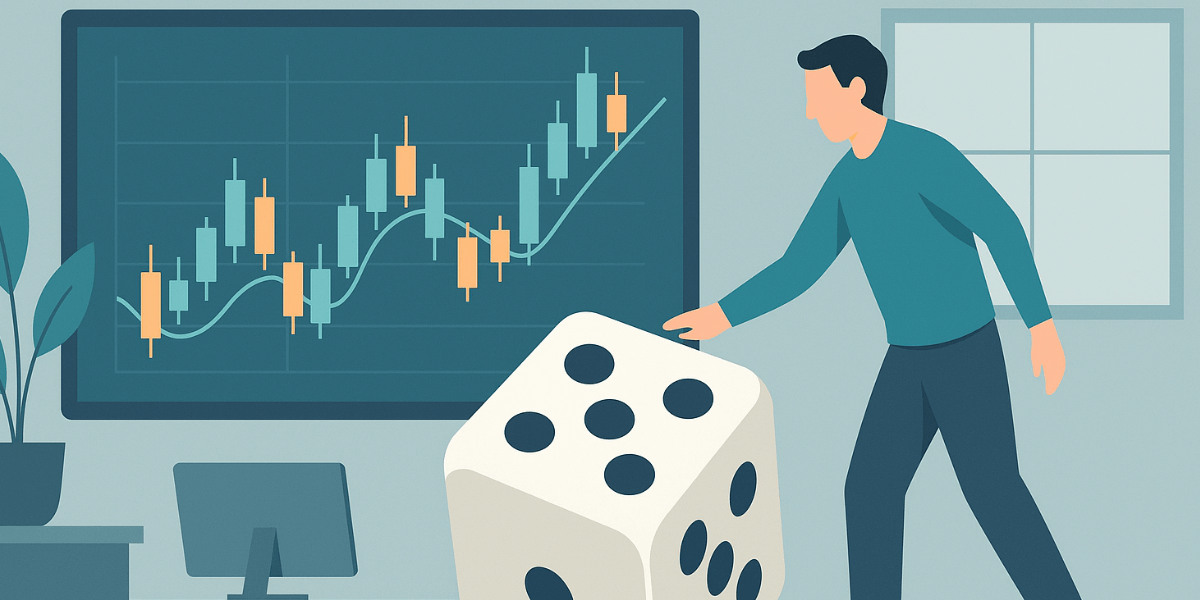Trading is often framed as a purely mental pursuit — a contest of logic, pattern recognition, and emotional self-control conducted across screens and spreadsheets. Yet anyone who has attempted to trade consistently for months or years discovers a more fundamental truth: your body sets the ceiling for your mind. Fatigue narrows attention. Poor posture shortens patience. Irregular sleep distorts risk perception. When the physiology falters, discipline fractures — regardless of how refined the trading plan appears on paper. In this sense, physical fitness is not a lifestyle accessory for traders; it is structural risk management for the nervous system that makes every decision. The fitter you are, the more you can rely on your rules under pressure. The less fit you are, the more your biology drags you toward impulse, distraction, and shortcut thinking.
This article develops a practical, performance-centered framework connecting physical fitness to trading discipline. It moves beyond platitudes to show how sleep, aerobic conditioning, strength training, mobility, breath mechanics, and recovery directly influence the core behaviors that separate professionals from dabblers: rule adherence, position sizing fidelity, patience with winners, decisiveness with losers, and the ability to stop trading when depleted. We will translate sports science and occupational ergonomics into daily trading protocols, illustrate common “fitness leaks” that quietly erode expectancy, and provide concrete templates that integrate movement, nutrition, and rest into a trader’s schedule without wishful thinking. The goal is not optimization for its own sake, but reliability: to make your best behavior your typical behavior, not an occasional high point.
Discipline is frequently mischaracterized as willpower — a psychological muscle you flex harder when you care more. A more accurate description is capacity: the brain’s executive functions (inhibition, working memory, cognitive flexibility) ride atop a biological platform that must be fueled, oxygenated, and rested to work on demand. When energy wanes or stress hormones remain elevated, the prefrontal cortex relinquishes control to faster, reflexive systems designed for short-term survival. In markets, that shift shows up as chasing price, moving stops, or adding to losers “just this once.” If you repeatedly find yourself saying “I knew what I should have done, but I didn’t do it,” the gap is rarely knowledge; it is a platform problem.
Physical fitness tightens that gap by making high-quality behavior accessible more of the time. Aerobic fitness improves cerebral blood flow and widens attentional bandwidth. Strength training increases posture integrity and reduces the discomfort that competes for focus during long sessions. Mobility and breath mechanics lower baseline sympathetic tone, allowing calmer decisions in volatile conditions. Sleep consolidates pattern learning and replenishes inhibitory control. Nutrition stabilizes blood glucose so that your emotional state does not swing with your snacks. Together, these inputs raise your floor — the quality of execution you can deliver on an average day, not just your best day. Trading is an “infinite game”; the winner is the one whose floor is high and steady.
How Fitness Expressly Shapes Trading Behaviors
It is tempting to assume the link is vague — “feel better, trade better.” In reality, specific fitness habits produce highly specific behavioral upgrades that matter for expectancy:
- Consistent sleep preserves top-down control, reducing impulsive entries and exits.
- Moderate aerobic training improves sustained attention, supporting patient hold times and fewer “micro-flips” of bias.
- Strength and posture reduce somatic distraction and pain, lowering the probability of rule breaks during long waits.
- Mobility and breath drills downshift arousal quickly after a stop-out, preventing revenge trades.
- Stable nutrition and hydration smooth mood and decision thresholds, supporting size discipline and adherence to checklists.
These are not soft benefits; they are direct inputs into the behaviors that create or destroy edge over thousands of trades.
Sleep: The Master Lever of Inhibitory Control
Sleep loss degrades reaction time and risk estimation before you feel “tired.” The first casualties are subtle: a slightly earlier click, a slightly wider discretionary stop, a slightly faster willingness to exit winners. Cumulatively, those micro-deviations flatten expectancy. Traders often try to compensate with stimulants, which mask sleepiness while further elevating autonomic arousal — great for sprinting, poor for rule-following.
Trading protocol: anchor wake time, not bedtime; protect 7–9 hours in a dark, cool room; finish stimulants 8 hours before sleep; end screen-intensive work at least 60 minutes prior; use a repeatable “pre-shutdown” ritual (journal, plan tomorrow’s levels, low-light reading). You are not only sleeping to feel rested; you are sleeping to trade your plan instead of trading your mood.
Aerobic Conditioning: Fuel for Focus and Patience
Attention is metabolically expensive. Aerobic training increases your capacity to hold focus without strain, improving “time on target” for clean setups and reducing the itch to manufacture trades during low-quality conditions. Post-exercise improvements in executive function persist for hours, particularly after 20–40 minutes at a conversational pace.
Trading protocol: schedule 3–5 aerobic sessions per week (walking, cycling, rowing) at low-to-moderate intensity. For morning traders, a short zone-2 session before the session can sharpen sustained attention; for afternoon traders, a midday brisk walk can reset arousal and extend mental stamina.
Strength Training: Architecture for Posture and Resolve
Long screen sessions compress the thoracic spine and tighten hip flexors, encouraging shallow breathing and sympathetic dominance. Strength work that restores extension and posterior chain integrity — hinge, squat, row, carry, press — counteracts those forces. A comfortable, pain-free posture turns endurance into an ally rather than a test of willpower. Just as important, the habit of progressive overload conditions delayed gratification and record-keeping — the same meta-skills that support trade journaling and incremental strategy refinement.
Trading protocol: two or three full-body sessions per week, 30–45 minutes, emphasizing quality over load: deadlifts or hip hinges, squats or split squats, rows, overhead or incline presses, loaded carries, and anti-rotation core. Keep reps shy of failure to avoid CNS hangover on heavy trading days.
Mobility, Breath, and State Shifts on Command
After a stop-out or news spike, your heart rate climbs and attention narrows. You do not need a day off; you need a state change. Two minutes of slow nasal breathing (inhale ~4 seconds, exhale ~6–8 seconds) or a short mobility sequence (thoracic rotations, hip openers, neck glides) reduces sympathetic tone and widens perception again. State control is the difference between following the next checklist step and improvising “just this once.”
Trading protocol: insert 60–120 second “state resets” at pre-defined triggers: after a realized loss, before adding risk, and at the top of each hour. Treat them as mandatory risk management steps, not optional wellness activities.
Nutrition and Hydration: Quiet Governors of Mood and Thresholds
Blood glucose volatility is associated with fluctuations in irritability, urgency, and threat perception. Heavy, high-sugar meals predispose you to postprandial fog — a prime window for breaking rules because your patience is literally under-fueled. Dehydration, even mild, can produce headaches and reduce vigilance.
Trading protocol: build sessions around stable fuel: protein-forward breakfasts or fasted light activity, complex carbohydrates around hard efforts, consistent hydration with electrolytes if needed. Keep snacks simple and non-sedating (yogurt, nuts, fruit). The goal is stable thresholds: you want the same you deciding at 9:03 and 13:47.
Ergonomics: Removing Friction from Execution
The most disciplined plan can be undone by a workstation that hurts. Monitor height just below eye level, seat pan supporting thighs with feet flat, elbows near 90°, wrists neutral, a chair with lumbar support, and sufficient desk depth to maintain screen distance. Lighting matters: diffuse, indirect light reduces strain and squint-induced tension. The less your body protests, the longer your prefrontal cortex can stay in charge.
Micro-Breaks and Cognitive Pacing
Elite performers alternate stress and recovery within sessions. For traders, 50–80 minutes of focus followed by 5–10 minutes of movement resets the visual and vestibular systems. Look far away, blink intentionally, stand, walk, open the chest. These tiny recoveries aggregate into an afternoon that still has precision instead of frazzle.
Table: Fitness Inputs to Trading Outputs
| Fitness Input | Direct Physiologic Effect | Trading Behavior Upgraded | Risk Managed |
|---|---|---|---|
| 7–9 hours consistent sleep | Restores inhibitory control; consolidates learning | Stop-moving; size discipline; patient holds | Impulsive entries/exits |
| Zone-2 aerobic training | Improves cerebral perfusion and attention | Checklist compliance; fewer boredom trades | Overtrading in low-quality regimes |
| 2–3 strength sessions/week | Posture integrity; resilience to static load | Long-session focus; less fidget-driven errors | Somatic distraction |
| Breath & mobility resets | Rapid downshift of sympathetic arousal | Revenge-trade prevention; clarity post-loss | Tilt escalation after drawdowns |
| Stable nutrition & hydration | Smoother glucose; lower headache/fatigue | Rational exits; consistent appraisal of risk | Mood-driven rule breaks |
| Ergonomic workstation | Reduced musculoskeletal strain; lower eye fatigue | Cleaner execution during long holds | Attention drift; discomfort-driven errors |
Designing a Practical Weekly Template
Traders need systems, not slogans. The following template balances training stress with session reliability. Adjust volumes to your context; the principle is rhythm, not rigidity.
- Monday: AM zone-2 cardio 30–40 min; PM mobility 10 min; normal trading block; journal.
- Tuesday: Full-body strength 35–45 min (hinge, row, squat, press, carry); mobility resets each trading hour.
- Wednesday: Brisk walk 20–30 min; breathing practice 5 min pre-open; lighter trading load if poor sleep.
- Thursday: Full-body strength 35–45 min; prioritize sleep buffer if Friday has catalyst risk.
- Friday: Zone-2 20–30 min post-session to downshift; week review and next-week prep.
- Weekend: Longer outdoor activity (60–90 min easy), mobility flow, meal prep, sleep catch-up if needed.
Insert 60–120 second breath or mobility resets after any realized loss, at the top of each hour, and before any discretionary size increase. Treat these as part of your risk plan, not optional fitness “extras.”
Failure Modes: Fitness Leaks that Kill Expectancy
Some leaks are obvious: no sleep, no movement. Others are subtle and therefore dangerous:
- The hero workout before a major catalyst: heavy, high-volume training the night before a high-volatility day compromises CNS freshness and sleep. Keep hard training away from known decision-intensive sessions.
- The stimulant ladder: coffee → energy drink → late caffeine → poor sleep → more caffeine. Cap intake early; replace late spikes with breath work and light movement.
- “I’ll move when the market slows” fallacy: the market rarely announces a break. Schedule movement regardless, or you will never take it.
- Big lunch in the middle of the session: heavy meals flatten focus. Front-load protein and fiber; keep the session meal lighter and stable.
- Ergonomic procrastination: weeks become months in a bad chair. Fix it. It is a one-time decision that pays attention dividends daily.
Fitness as Meta-Discipline Training
Strength cycles, run logs, heart-rate caps, progressive overload, deload weeks — these are not just physical tools; they are mirrors of good trading: plan the work, work the plan, measure the result, refine the plan. When you keep a training log, you practice the same habits that make a great trade journal: honest measurement, incrementalism, and patience with compounding. Fitness, therefore, doubles as a simulator for the psychological skills trading demands. You are rehearsing consistency in an environment where the stakes are lower and the feedback is immediate. That rehearsal carries back into the market.
Building Your “State Matrix” for the Trading Day
Create a one-page card you can see beside the keyboard:
- Green (Ready): 7+ hours sleep, HRV acceptable (or subjectively calm), no significant soreness, clear plan → trade A-Setups at full size.
- Yellow (Caution): 5–6 hours sleep or elevated stress → reduce risk to 50–75%, mandatory breath reset before any add.
- Red (No Go): <5 hours sleep, illness, high agitation → no new risk; review, journal, prepare levels only.
Fitness inputs largely determine which color you wake in. Your matrix turns vague “listen to your body” into an operational rule.
Recovery as Risk Management
Professionals stop while they still have their best decision-maker available tomorrow. Plan breaks into the micro (hourly), meso (daily), and macro (weekly) cycles. Use the weekend not just to “catch up” but to change stimulus: sunlight, social connection, and nature exposure recalibrate circadian and stress systems in ways that screens cannot. Recovery is not time away from trading; it is part of how you trade.
Putting It All Together: A Day in the Life
Consider a morning session trader:
- Wake 06:00, light mobility and 15-minute walk, protein-forward breakfast, first coffee.
- 07:00–07:25 plan: key levels, scenarios, risk caps. Two minutes of slow breathing before open.
- Session: 50–70 minute focus blocks with 5-minute movement resets on the hour; water within reach; stable snack if hungry.
- Loss trigger: any realized loss → 90-second breath reset before next action; no immediate re-entry.
- 11:30 session end: journal discipline score first, P&L second; 20–30 minutes zone-2 or a brisk walk.
- Afternoon: strength 35 minutes or mobility 10 minutes; screens off 60 minutes before bed; tomorrow’s plan drafted.
This is not austere. It is livable. More importantly, it is repeatable — and repeatable behavior is where expectancy is earned.
Conclusion
“Trade your plan” is easy to write and hard to do. The gap between plan and action is not bridged by more indicators or more willpower; it is bridged by a body capable of letting your best self show up on demand. Physical fitness raises the reliability of your executive control, stabilizes your mood thresholds, and lowers the background noise that tempts you to improvise under stress. Aerobic capacity buys you attention. Strength buys you posture and durable comfort. Mobility and breath buy you rapid state shifts. Sleep buys you inhibition and learning. Nutrition buys you steady thresholds. Ergonomics buys you time in the chair without paying in pain. Each of these purchases feeds the same account: discipline.
None of this requires perfection. It requires rhythm. Build small, bankable wins into your schedule and repeat them until your average day is already good enough. Treat your training log like your trade journal; let both teach you incremental humility and compounding. Protect the decision-maker by sleeping, moving, fueling, and recovering as if they were part of your trading stack — because they are. If you do, you will discover that the most valuable “edge” is not cleverness but consistency, and consistency is a physiological achievement before it is a psychological one. The market will still be uncertain. You will not. That steadiness is what allows your plan to cash in its statistical promise across months and years, not hours and days.
Frequently Asked Questions
How much exercise does a trader actually need to improve discipline?
You don’t need athlete volumes. Aim for 150–180 minutes per week of low-to-moderate aerobic work, plus 2 full-body strength sessions of 30–45 minutes each. Add 5–10 minutes of mobility most trading days. The priority is consistency, not intensity.
What time of day is best to train if I trade mornings?
Keep pre-session work light: a 10–20 minute walk or mobility flow. Save strength training or longer cardio for after the session, when decision-making is complete. This preserves cognitive freshness during live risk.
Will heavy lifting hurt my trading performance?
It can if you train to failure or cluster maximal effort near high-demand market days. Stay one to two reps shy of failure, keep sessions 30–45 minutes, and place harder training away from key catalysts. Strength is beneficial; central fatigue is not.
How do I recover quickly after an emotional loss?
Install a mandatory reset: 60–120 seconds of slow nasal breathing (longer exhale than inhale), stand up, open the chest, look at a distant point to relax eye muscles. Do not re-enter during that reset. Your rule turns emotion into a timed event, not a trading driver.
What should I eat during the session to avoid crashes?
Choose stable, low-sugar options: Greek yogurt with nuts, a small protein wrap, fruit with nut butter, or simply water and electrolytes if not hungry. Avoid heavy meals and large sugar hits that cause postprandial dips.
Does better fitness really show up in my P&L?
Indirectly but meaningfully. Fitness reduces rule breaks, cuts revenge trades, stabilizes position sizing, and lengthens patience with winners. Over a large sample, fewer behavioral errors translate into higher expectancy and smoother equity curves.
What if my schedule is already packed?
Start with the smallest high-yield changes: protect sleep, add two 10-minute walks around the session, perform one 30-minute strength circuit twice weekly, and breathe for 90 seconds after losses. Layer in more only after these are automatic.
How do I know if I’m overdoing training relative to trading?
Track subjective readiness: if you wake sore, wired, or underslept before a heavy session, you trained too hard or too late. Reduce load and prioritize sleep before decision-intensive market days. Your job is trading; training supports it.
Which ergonomic upgrades matter most?
A supportive chair with lumbar support, monitor height just below eye level, a desk deep enough for proper screen distance, and diffuse lighting. These one-time changes remove chronic discomfort that quietly saps discipline.
Is meditation necessary, or can breath work suffice?
Either can work. For many traders, 60–120 seconds of structured breathing provides a faster, more accessible state change in-session. Longer mindfulness practices outside the session deepen the baseline, but the crucial tool is a quick reset you will actually do.
Note: Any opinions expressed in this article are not to be considered investment advice and are solely those of the authors. Singapore Forex Club is not responsible for any financial decisions based on this article's contents. Readers may use this data for information and educational purposes only.







